
Ned Pelger's blog on construction, design and other weirdness. Email him at ned@constructionknowledge.net
Please help him win his readership competition against his son Lex at the Construction Phone Apps Blog
Have you ever had the opportunity to work on any novelty architecture projects? It’s fun and challenging to get out of the norm of construction and work on some odd ball projects. This Appetizing Architecture post shows lots of fun food buildings and structures. A few photos below give you a taste…
Like a drive through donut shop in (where else?) California

Or a giant milk bottle ice cream stand in Boston.
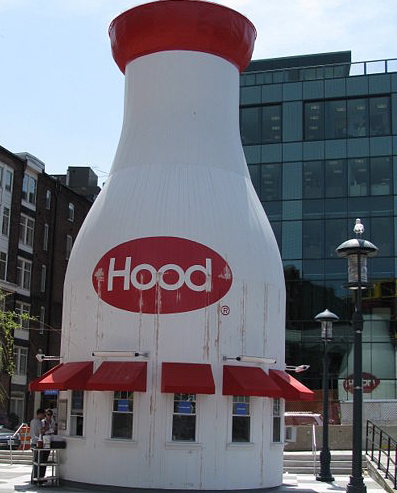
The Longaberger Basket building below is a much more substantial project. Built over 10 years ago, the corporate office building became a tourist destination for Longaberger basket devotees. This project really helped build their brand.
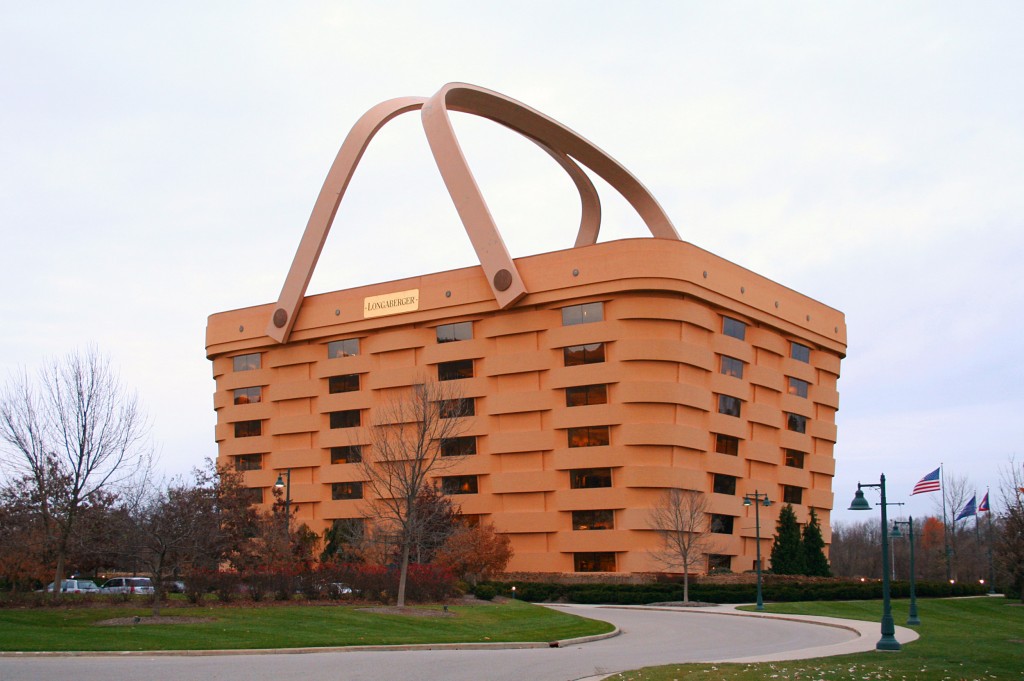
Most of us aren’t going to get to work on projects this wacky, but we may have some fun things come our way. I did an Isaac’s Deli building a few years ago and had to figure out how to design and build a steel gull wing sculpture/canopy above the entrance.
At the time, it seemed like one more thing to do during a busy time. It didn’t feel like a fun challenge, it was a pain, something that took time I didn’t think I had. I look back, though, with fondness and a bit of nostalgia.
As you struggle this week, doing more than you think you can get done. Take a moment to stop and appreciate the fact that you get to do some challenging work. Look back on some things you’ve completed and let yourself feel good about your accomplishments. This is your life, baby, enjoy it.
Mark Twain said, “It is a little thing – glass is – until it is absent, then it becomes a big thing.” As I stood on the clear glass floor at the Corning Glass Museum, I read the quote and thought of all the times glass becomes a big thing. When a window breaks on a cold night, when you live/work in a space without natural light, when you stand on a glass floor.

Then I thought I was glad TBW didn’t wear a skirt today. We were touring the amazing Corning Glass Museum in Corning NY. If you have a chance to visit, I highly recommend it. They spent $65M on a cool industrial style building that teaches and delights.
For example, we all know that fiber optic cable carries more data (bandwidth) than copper wire. Do you have a sense how much more? The fiber optic cable is the size of light nylon fishing line. The photo below shows how much copper wire carries the same amount of data as a single fiber optic wire (about 8′ diameter).

Another thing I liked about the Glass Museum was how well they involved us in hand’s on projects. We watched several demonstrations of glass experts making some great artistic and functional pieces. They start working with this honey like substance and end with these beautiful creations. It’s one thing to watch others work the glass, it’s another experience entirely to make a piece yourself. We enjoyed getting to start with molten glass and end with some nice pieces.
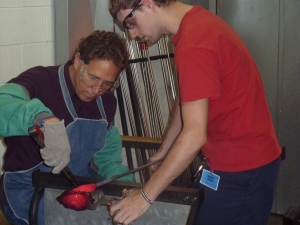
Of course, We also loved seeing the museum glass pieces. What a delightful day, to wonder and wander, appreciating the creativity of others. If you don’t visit museums, you should consider it. See photo below for example motivation. And yes, I do realize my mind tends to be of the one track variety.
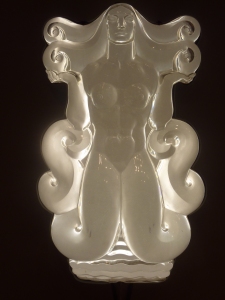
TBW and I are traveling for a few days, we headed north up Route 81 and stopped at the Lackawana Coal Mine tour. They take you 250 feet below grade into a deep anthracite mine. Riding in a coal car down the tracks, being lowered by a steel cable gave me the beginnings of the willies. I’m not crazy about enclosed spaces and wondered how I’d feel that far below grade. Like most anxieties, it was unwarranted. I was too interested in how things worked down there to be scared.
The mining process reminded me of a construction site on a day when one of the nastier jobs has to get done. Basically, it’s a big demolition project in which the coal veins get removed (except for a grid of coal columns that remain as structural supports) and the sandstone remains.
The wood posts, which I always thought were structural supports, aren’t near capable of supporting the rock and soil load above. The sandstone arches over the mining tunnels (about 15′ wide) and supports itself (until it doesn’t).
If the sandstone cracks or subsides in some way, the load above is huge. The wood posts start to snap, crackle and pop, acting as warning sounds that subsidence is occurring. The old saying goes, “When the props start talking, the miners start walking.” They also watched the rats, who had keener senses than humans and starting running for cover before the miners heard anything.

The photo above gives a sense of those supports while the donkey shown below shows how they did it in the old days. Some of the boys started working in the mines at 7 or 8 years old and were called “Nippers”.
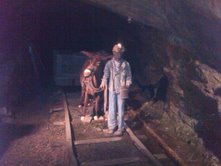
Generally the drilling, blasting, waiting for the dust to settle, then cleaning the debris doesn’t seem too different from construction demo. Then I heard about monkey veins. Sometimes the coal veins were 10′ high and easy to work in. Other times, though, the veins may only be 2′ to 3′ high. Then the miners needed to work all day on their hands and knees or on their bellies. They only got paid by the car load, so working in a monkey vein just meant you had to work harder for the same pay. The photo below shows a monkey vein.
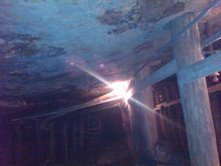
So you may be tired after a hard day, but remember it’s not a day in the mines.
I love water features, fountains and sculptures. The flowing of water mesmerizes me. I stumbled across a website UPHAA: All Things Around the World that has some beautiful water sculptures. Have you ever had a chance to design or build a cool water feature? I thought I was going to on a current project, but we ended up just putting a big rock there instead (bless my practical little heart). So I continue to appreciate what others have done.
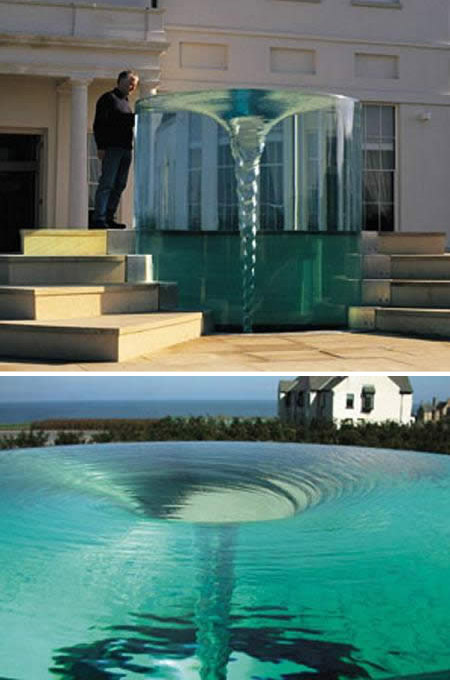
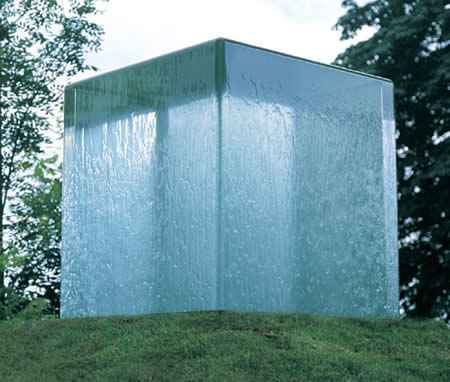
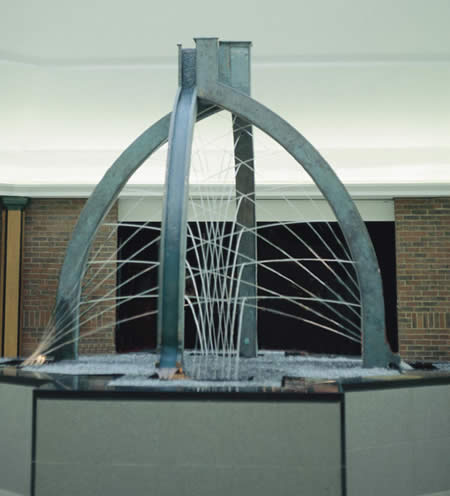
The video below is less than a minute and really worth watching if the water vortex fascinates you.
[youtube=http://www.youtube.com/watch?v=XxvHVREQogY&feature=player_embedded]
Herbert Hoover, US president prior to FDR and a mining engineer, spoke about engineering:
“Engineering. It is a great profession. There is a fascination of watching a figment of the imagination emerge through the aid of science to a plan on paper. Then it moves to realization in stone or metal or energy. Then it brings jobs and homes to men. Then it elevates the standard of living and adds to the comforts of life. That is the engineer’s high privilege…..No doubt as years go by the people forget which engineer did it, even if they ever knew. Or some politician puts his name on it. Or they credit it to some promoter who used other people’s money…But the engineer himself looks back at the unending stream of goodness which flows from his successes with satisfactions that few professionals may know. And the verdict of his fellow professionals is all the accolade he wants.”
I find the joy of helping build the projects just as satisfying (perhaps more) than the planning. We are fortunate to be involved in tangible work that let’s us be happy at the end of most days.
A carpenter considers the wall she’s about to build and goes a bit fuzzy on the dimensions. She pulls out her phone, points it at the wall and the camera viewfinder shows the background while the internet provides the view of the future wall. She scrolls to menu and finds the dimensions and other attributes. She looks at the wall through her phone and can see the future wall. That is augmented reality.
Sound fantastic? All the pieces of technology are now available on new phones: fast internet connections, GPS, tilt sensors and the last piece of this technology, which recently became available on phones and will soon be widespread, digital compasses. With those pieces of technology, the software knows where you are, which way you point your phone and what angle you tilt it.
The first uses of augmented reality will probably be crowd sourced from Wikitude, a travel guide application. You can point your phone while traveling through Germany, for example, and see the names of landmarks, castles, and other points of interest. As you zoom in, you can find much more information about those items you see. As people around the world add content (like on Wikipedia) imagine the increase of accessible intelligence you’ll have!
We live in a time of change that transcends most of our imaginations. Take some time every month to keep up with the technology. When you fall too far behind, you lose value. If you want to read an excellent article about augmented reality, try this at The Economist.
The Ironworkers that repair and maintain the Golden Gate Bridge in San Francisco often find some odd ancillary duties. Many folks decide the bridge would be a good jumping off place, so to speak, and decide they are going to end their lives there. The Ironworkers go to those poor souls hanging on the beams or ledges and act as the first responders on the scene.

Two of these Ironworkers, shown below, tell some of the stories here. It’s an interesting listen, made possible by the StoryCorps, a fascinating website that allows regular people (non-celebrities) to record the best stories of their lives. The website then selects the best of the best and allows the rest of us to have a listen. It’s a good place to visit from time to time to gain some perspective on your own life.
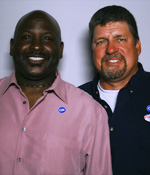
As Ed Lillywhite Norton on The Honeymooners said, “You see it all in the sewers.” If you are getting concerned about this construction industry career choice you made (or more likely happened into), watch the video below to consider an alternate vocation.
[youtube=http://www.youtube.com/watch?v=3yZdBrwjFa8]
Years ago, when I worked building wastewater treatment plants, the prominent saying was, “It may smell like Sh*t to you, but it smells like money to me.” If you haven’t been smelling much money in building construction these days, maybe you should consider being a sewer detective.
My friend Randy Meyerhoffer just built some perfect Azak window boxes for a condo project we’re working on. Though a tad pricey, these window boxes set-off the entire facade. They are extraordinarily well made and beautiful. Randy lives his life dedicated to producing the highest quality possible. I don’t.
I appreciate high quality workmanship, I just think Owner’s should get to define the level of quality and cost they want, then obtain it. Randy sees this concept as the crappification of the world. Everything being done cheaper, not lasting as long, not as beautiful. I see it as a valid choice to save some cash and live with the results.
Wired magazine just did an excellent article The Good Enough Revolution: When Cheap and Simple is Just Fine which I strongly encourage you to read. They trace the trend that moderns often prize simplicity and use over high quality features. Think about how this affects what you design and what you build.
Too many times we install systems for Owners that never really work the way they envisioned. Many times the details for these systems get worked out on the jobsite. Over the years, I’ve become a stronger advocate for simplicity, telling Owner’s that what they think they want probably isn’t what they really want. While it takes some gumption to do that, the results are often worth it.
In everything we do, let’s think about what we really value. That’s the best way to determine if simplification can work. Begin by understanding that just because we can do or measure something, doesn’t mean we should.